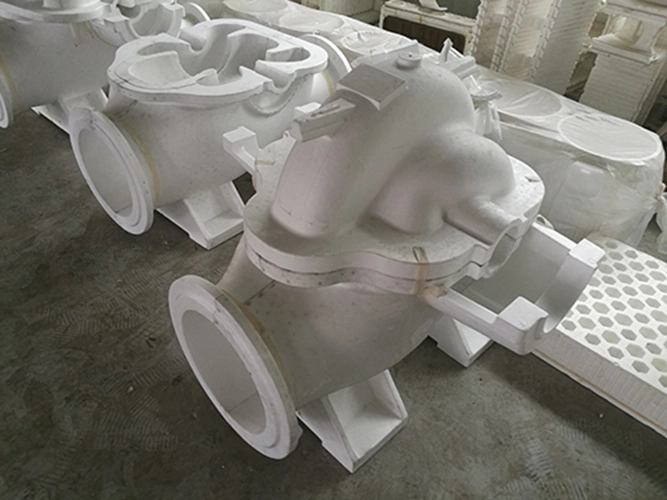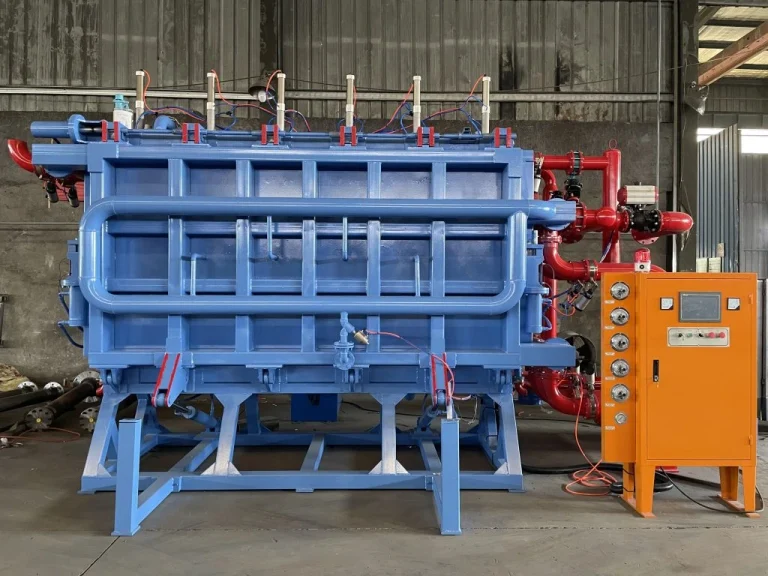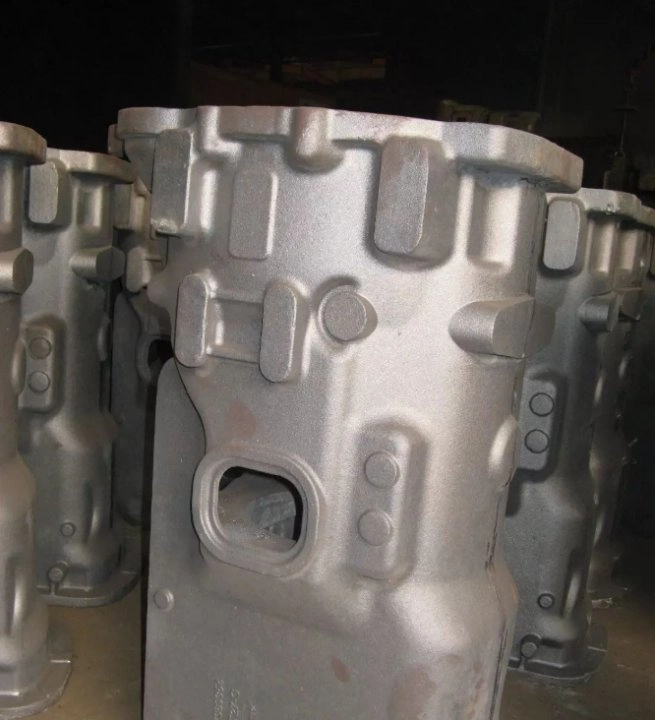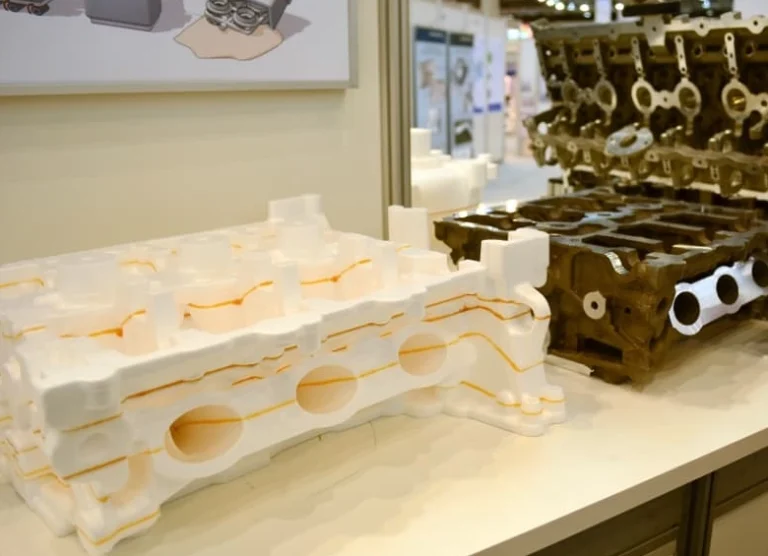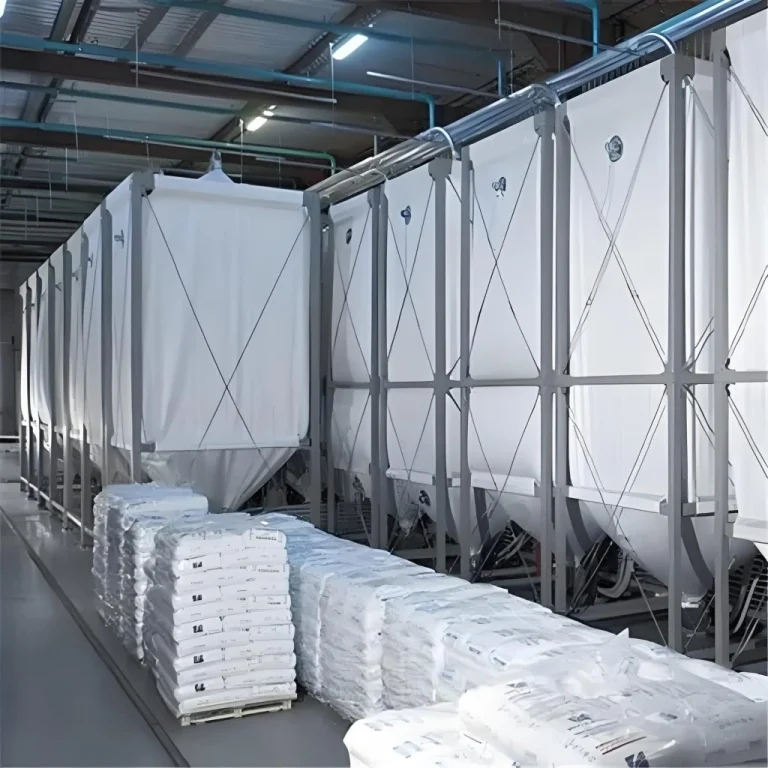المفقودة صب الرغوة, also called evaporative pattern casting, is a super cool way to make parts. It’s really flexible and exact. The oil and gas industry loves it. This method, sometimes called full-mold casting, uses a foam shape. You cover it with refractory stuff and put it in a sand mold. When hot metal is poured, the foam goes away. This leaves a detailed metal part.
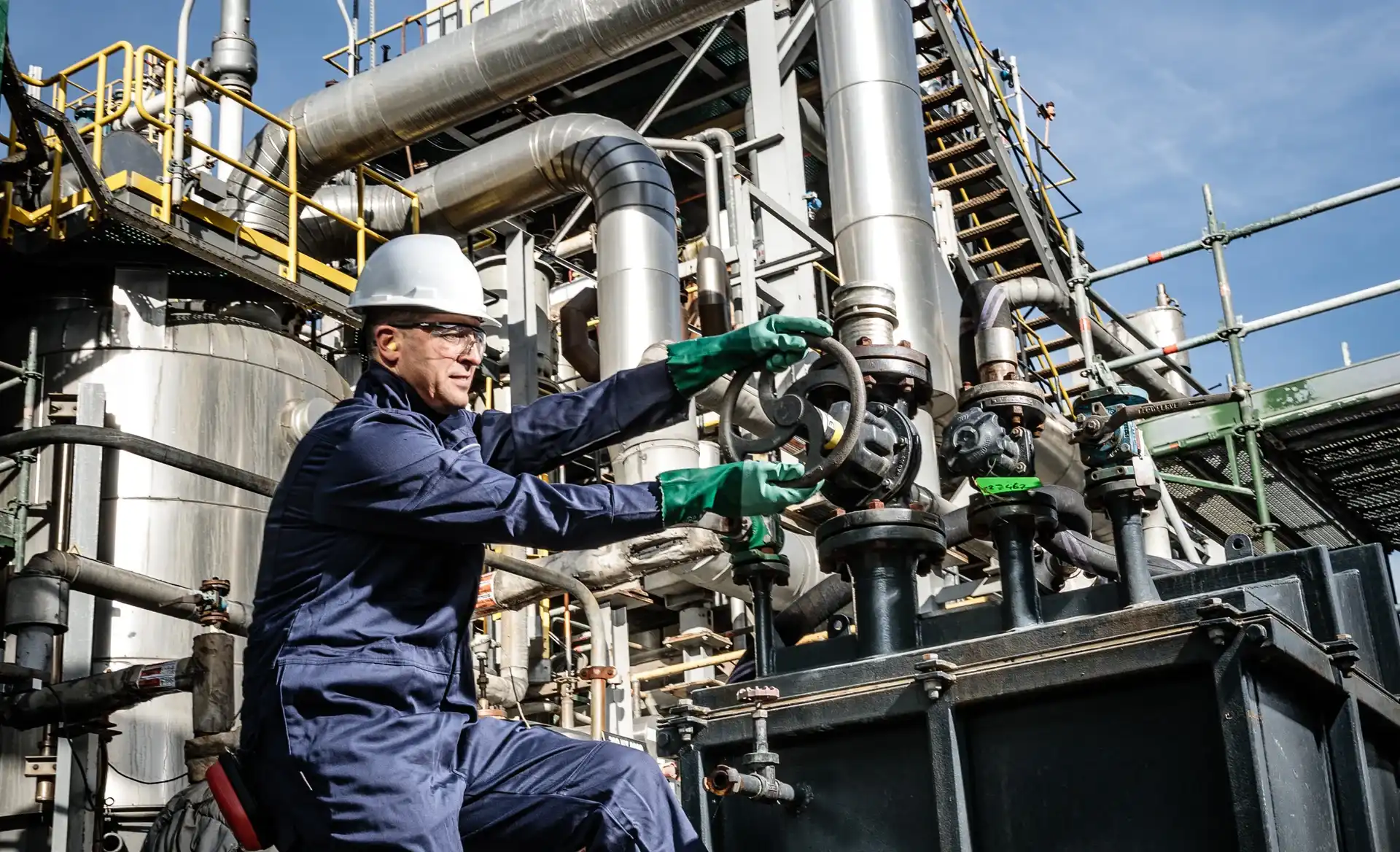
مقدمة في الصب بالرغوة المفقودة
Lost foam casting is great for making tricky metal parts. It’s super accurate and gives a nice, smooth surface. This makes it perfect for oil and gas parts that don’t need much cleanup after casting. It’s a top pick for tough places like oil and gas sites. Plus, it’s a cheap way to make exact parts that work well under strict rules.
Key Steps in Lost Foam Casting
- Foam Shape Making: A polystyrene foam pattern or expandable polystyrene pattern is made. It looks just like the part you want.
- Pattern Setup: The foam shape gets connected to gates. These help the hot metal flow in.
- Refractory Coating: You put a special coating on the foam. This makes a strong shell around it.
- Mold Prep: The coated foam goes into loose sand inside a lost foam casting mold.
- Pouring Metal: Hot metal is poured in. It burns away the foam and fills the mold.
- Mold Removal: After the metal cools, the sand mold is taken off. This shows the finished part.
- Final Touches: The part gets cleaned and polished to make it a top-quality casting.
Benefits of Lost Foam Casting in the Oil and Gas Industry
The oil and gas industry needs strong parts. These must handle high pressure, hot temperatures, and harsh stuff. Lost foam casting has lots of perks:
- Tricky Shapes: It makes complex parts with great accuracy. This is awesome for oil and gas pieces.
- Super Exact: It gets tight measurements right. This means less extra work after casting.
- Smooth Finish: It gives parts a nice, smooth surface. This helps them work better and last longer.
- Lots of Materials: It works with many casting alloys, like steel castings, aluminum castings, and stainless steel castings.
- Saves Money: It cuts down on wasted material and extra work. This makes it a cheap option.
- Flexible Designs: It’s great for custom parts and quick test models for oil and gas jobs.

Common Applications in the Oil and Gas Industry
Lost foam casting makes lots of important oil and gas parts. These meet tough rules for performance and strength. Here are some key uses:
Valves and Valve Bodies
Valves and valve bodies control fluid and gas in pipelines. Lost foam casting makes tricky valve shapes with exact valve castings and smooth surfaces. This helps them work well and seal tightly.
- Perks: Super accurate, smooth finish, complex valve shapes.
- Materials: Usually steel valve castings or cast iron valves for strength and rust protection.
Pumps and Pump Housings
Pumps and pump housings move fluids in oil and gas work. Lost foam casting makes detailed pump parts with little extra work. This keeps them working smoothly and reliably.
- Perks: Exact sizes, smooth surfaces, less pump casting work.
- Materials: Often stainless steel pump castings or steel pump housings for toughness and rust resistance.
Compressor Parts
Compressor parts push gases in oil and gas processing. Lost foam casting is great for making detailed compressor parts that are strong and exact.
- Perks: Super accurate, nice finish, complex compressor shapes.
- Materials: Usually aluminum compressor castings or steel compressor parts for light weight and strength.
Fittings and Connectors
Fittings and connectors join oil and gas pipelines. Lost foam casting makes exact fittings and leak-proof connectors with smooth surfaces.
- Perks: Exact sizes, smooth surfaces, tricky fitting shapes.
- Materials: Often brass fittings, steel connectors, or stainless steel fittings for strength and rust protection.
Manifolds
Manifolds spread fluids or gases in oil and gas systems. Lost foam casting makes complex manifold shapes with high accuracy and speed.
- Perks: Super accurate, nice finish, tricky manifold shapes.
- Materials: Usually steel manifold castings or stainless steel manifolds for strength and rust resistance.
| Component | Benefits | Materials |
|---|---|---|
| Valves and Valve Bodies | High accuracy, smooth finish, complex geometries | Steel, cast iron |
| Pumps and Pump Housings | Precise dimensions, smooth surfaces, reduced machining | Steel, stainless steel |
| Compressor Parts | High accuracy, smooth finish, complex geometries | Aluminum, steel |
| Fittings and Connectors | Precise dimensions, smooth surfaces, complex geometries | Brass, steel, stainless steel |
| Manifolds | High accuracy, smooth finish, complex geometries | Steel, stainless steel |
Common Casting Defects and Mitigation Strategies
Lost foam casting is awesome, but it can have problems. These casting defects can mess up the quality. Knowing and fixing them is key for making great oil and gas parts.
Gas Porosity
Gas porosity happens when gases get stuck in the hot metal. This makes holes in the part.
- Causes: Wet molds, reactions between metal and mold stuff, or dirty materials.
- Fixes: Use good casting sand. Dry the mold well. Improve gates and vents for casting. Control the pouring temperature.
Shrinkage Porosity
Shrinkage porosity comes when metal shrinks as it cools. This makes holes if there’s not enough extra metal.
- Causes: Not enough casting risers or wrong cooling speeds.
- Fixes: Add enough casting risers. Set good cooling speeds. Use casting chills to control how it hardens.
Surface Defects
Surface defects, like roughness or bits stuck in the part, can hurt how it works and looks.
- Causes: Bad foam shapes, uneven coating, or dirty sand.
- Fixes: Use good foam shapes. Put on even coatings. Keep the casting sand clean.
Advanced Techniques and Technologies
To make lost foam casting even better for oil and gas parts, new tricks and tools are used:
Simulation and Modeling
Casting simulation software guesses and improves the casting process. It spots problems like holes or shrinkage in castings.
- Perks: Finds problems early, improves gates and vents, and boosts quality control.
- Uses: Makes the whole casting process better for oil and gas parts.
Vacuum-Assisted Casting
Vacuum-assisted lost foam casting uses a vacuum to pull gases out of the mold. This cuts down on holes in castings.
- Perks: Fewer holes, better quality, and super exact parts.
- Uses: High-precision oil and gas castings with few mistakes.
Inert Gas Purging
Inert gas purging uses gases like argon or nitrogen. These push out bad gases in the hot metal to cut down on holes.
- Perks: Makes cleaner metal parts with fewer problems.
- Uses: Oil and gas parts that need to be super pure and high quality.
| Advanced Technique | Benefits | التطبيقات |
|---|---|---|
| Simulation and Modeling | Predicts defects, optimizes process | General casting process optimization |
| Vacuum-Assisted Casting | Reduces porosity, improves quality | High-precision and high-quality castings |
| Inert Gas Purging | Reduces gas porosity, cleaner metal | Components requiring high purity and quality |
الأسئلة المتداولة (الأسئلة الشائعة)
What is the difference between lost foam casting and traditional sand casting for oil and gas components?
Lost foam casting uses a foam shape that burns away during pouring. This allows trickier shapes and smoother surfaces than regular sand casting, which uses reusable sand molds. It’s great for complex oil and gas parts like valves and manifolds. It also cuts down on extra work and costs.How does lost foam casting improve corrosion resistance in oil and gas applications?
It lets you pick exact alloys and make smooth surfaces. This cuts down on spots where rust can start. Materials like stainless steel castings are common. The process’s accuracy also ensures tight seals in tough places.What role does automation play in enhancing lost foam casting for the oil and gas industry?
Automation, like in evaporative pattern casting (EPC) equipment from Hangzhou Ouchen Technology, makes things faster and better. It helps make foam shapes and molds more consistently. This leads to great parts for important components.Can lost foam casting handle large-scale production for oil and gas fittings and connectors?
Yes, lost foam casting works well for big batches. It’s cheap and wastes less material. It’s awesome for tricky fitting shapes, making them strong and exact for pipeline systems.
خاتمة
Lost foam casting is a great choice for the oil and gas industry. It makes tricky parts with super accuracy and nice surfaces. It’s also a cheap way to make strong oil and gas parts. By fixing problems like gas holes, shrinkage, and surface issues with cool tools like casting simulation, vacuum casting, and gas purging, companies can make awesome lost foam castings. These improvements make sure lost foam casting stays a trusty and fast way to make tough parts that meet the industry’s high standards.
Ready to Revolutionize Your Oil and Gas Component Manufacturing?
Want to make your production better with advanced lost foam casting? Check out solutions from Hangzhou Ouchen Technology Co. ، Ltd. They specialize in high-end EPC equipment with German EPS/EPP technology. Their tools save energy, use automation, and offer great support for exact oil and gas castings. اتصل بهم في +86 15988479417 أو zyh@oc-epc.com to find custom options for your needs. Visit oc-epc.com for more info and start improving your casting process today!

